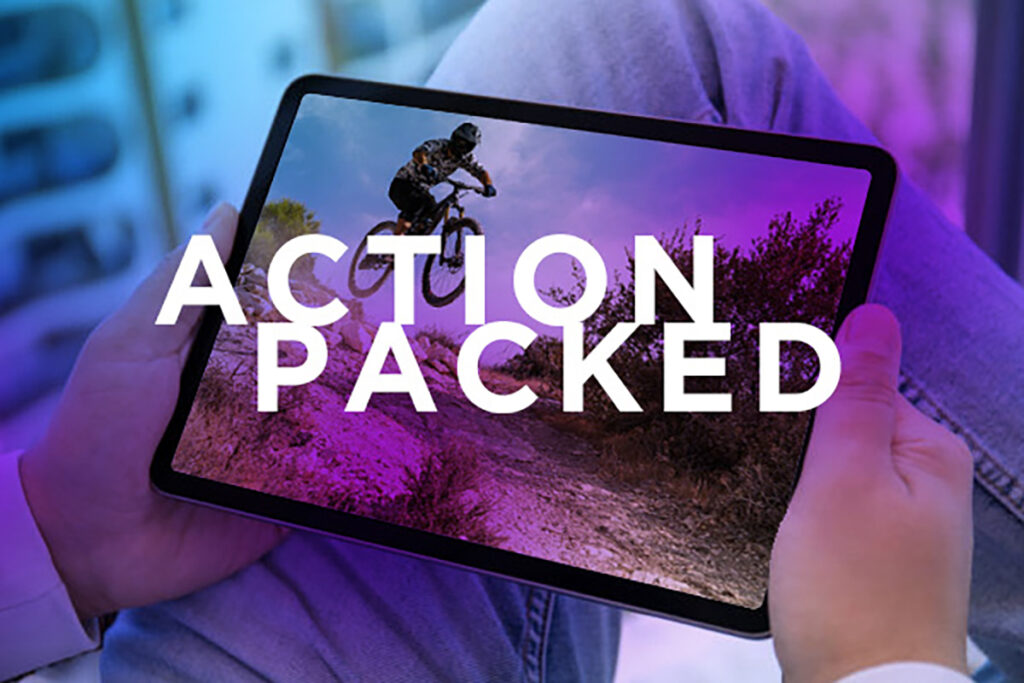Simple Feed

Video content has become one of the most effective strategies for businesses to market themselves in the digital age. Lifestyle and action video marketing provide an excellent way for brands to make meaningful connections with their intended audience and stand out from the competition. In addition, by putting products and services into an easily recognizable and inspiring context, viewers can easily understand how to integrate them into their lives.
The following are key reasons why lifestyle and action video marketing is a powerful tool for brands:
• Evoking emotions: These videos allow brands to connect with their audience emotionally by showing how their products or services can enhance the viewer’s daily life. They create a sense of aspiration and allow viewers to envision themselves using the product or service.
• Showcase products in action: Especially effective for complex items, lifestyle and action videos can demonstrate and explain products more captivating and comprehensively than text or images can, thus enhancing the likelihood of purchases.
• Amplify brand awareness: These types of videos are highly shareable, which means they can reach a wider audience than other forms of marketing. For example, they can be shared on social media, embedded on websites, and used in email marketing campaigns. This helps to increase brand awareness and reach a larger audience.
• Versatility: Such videos are versatile, as they can be used to demonstrate products, highlight customer testimonials, and offer a behind-the-scenes look at the company. This allows brands to address a diverse group of viewers and meet other marketing goals with just one video.
• Creating long-term impact: These videos leave a lasting and memorable impression on the viewer and, as a result, help enhance brand recall and foster customer loyalty.
To summarize, lifestyle and action video content marketing is an influential and effective method of marketing that can help brands relate to their customers, promote their products and services, and boost brand awareness. They offer a versatile and engaging medium that can be shared across platforms and help create a lasting impression on the viewer. As the digital world grows, it’s important to consider including lifestyle and action videos as part of your overall marketing strategy to enhance your brand’s message and reach your target audience.

Video is becoming the preferred medium for delivering training and educational content. A recent study conducted by the eLearning Industry found that an overwhelming 80% of respondents want more videos as part of their training and education programs, with video being the most requested form of eLearning content. Producing a training and education video provides a cost-efficient way to teach and convey information to a wide audience while at the same time eliminating the need for individualized training.
In order to create and deliver successful training and education videos, here are five useful tips to keep in mind:
Identify Clear Objectives. Before beginning video production, defining what you want your audience to gain is critical. Determine the specific goals you wish to achieve and align them with your overall training and education objectives. Doing this will help you focus on the essential elements of the video, allowing it to achieve its intended purpose.
Keep it short and sweet. The average attention span has reduced significantly, so keep videos concise and to the point. Aim to keep your videos to a maximum of 6-10 minutes. Additionally, use visual aids and interactive elements to keep viewers engaged. Finally, consider including a two-or three-question recap midway through to ensure retention.
Make use of different video formats. Different types of training and education content are more suited to various video formats. For example, a lecture-style video may work well for a traditional classroom setting, while a tutorial video may be more effective for a hands-on training session. Consider the content of your video and select the format accordingly to maximize the impact of your material.
Make it visually appealing. People retain information better when it’s presented in a visually appealing way, so it’s essential to put effort into the design and aesthetics of your videos. Use high-quality images, animations, and graphics to supplement your content and make it more engaging.
Test and measure results. Once your video is complete, testing it with a small group of users is vital to get feedback and make any necessary adjustments. Additionally, measure the results of your video to determine its overall effectiveness. Use this data to make improvements and fine-tune your approach for future videos.
Creating and delivering effective training and education videos requires a thoughtful approach. By defining clear learning objectives, keeping videos short and specific, using a variety of video formats, making them visually appealing, and testing and measuring results, you can ensure that your training and education videos successfully achieve their desired purpose.